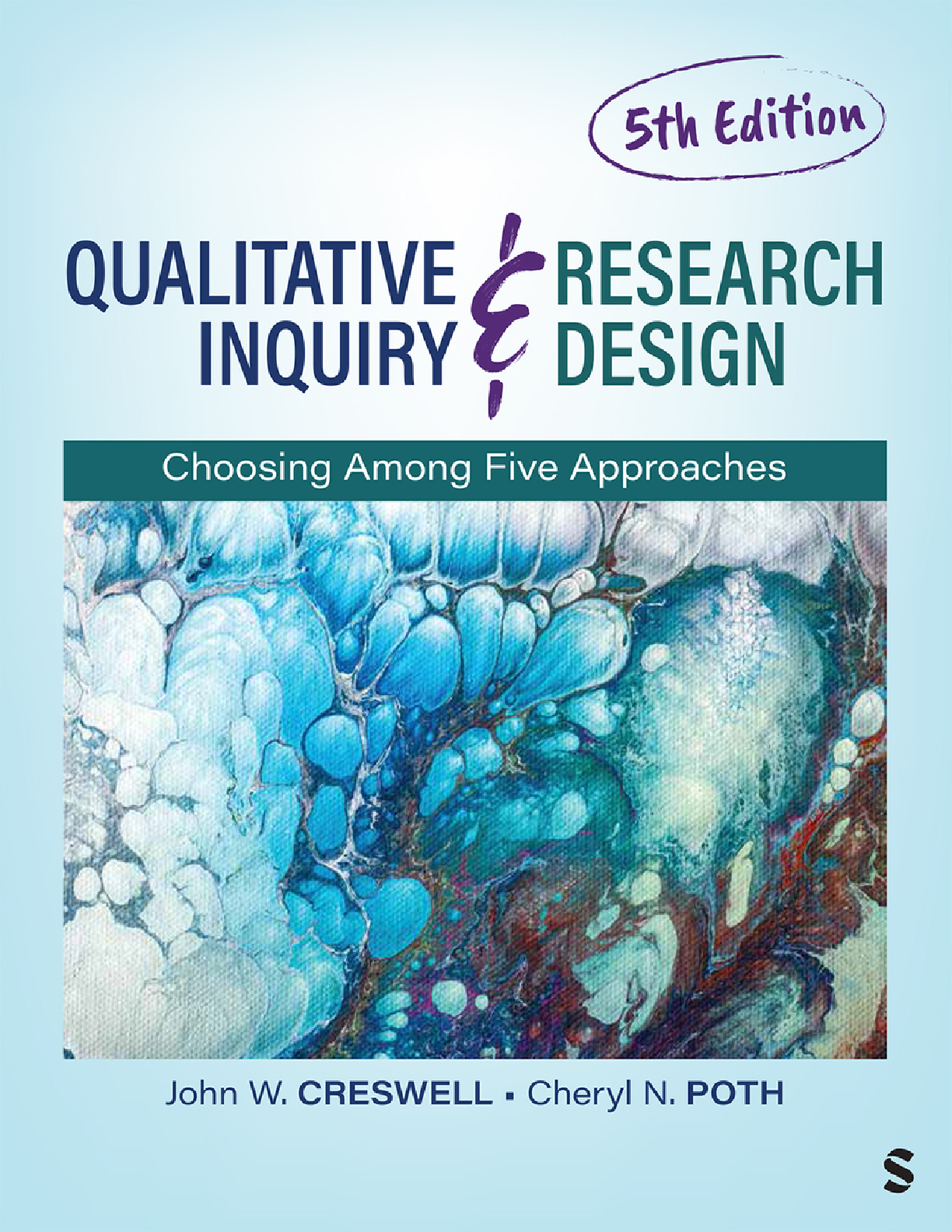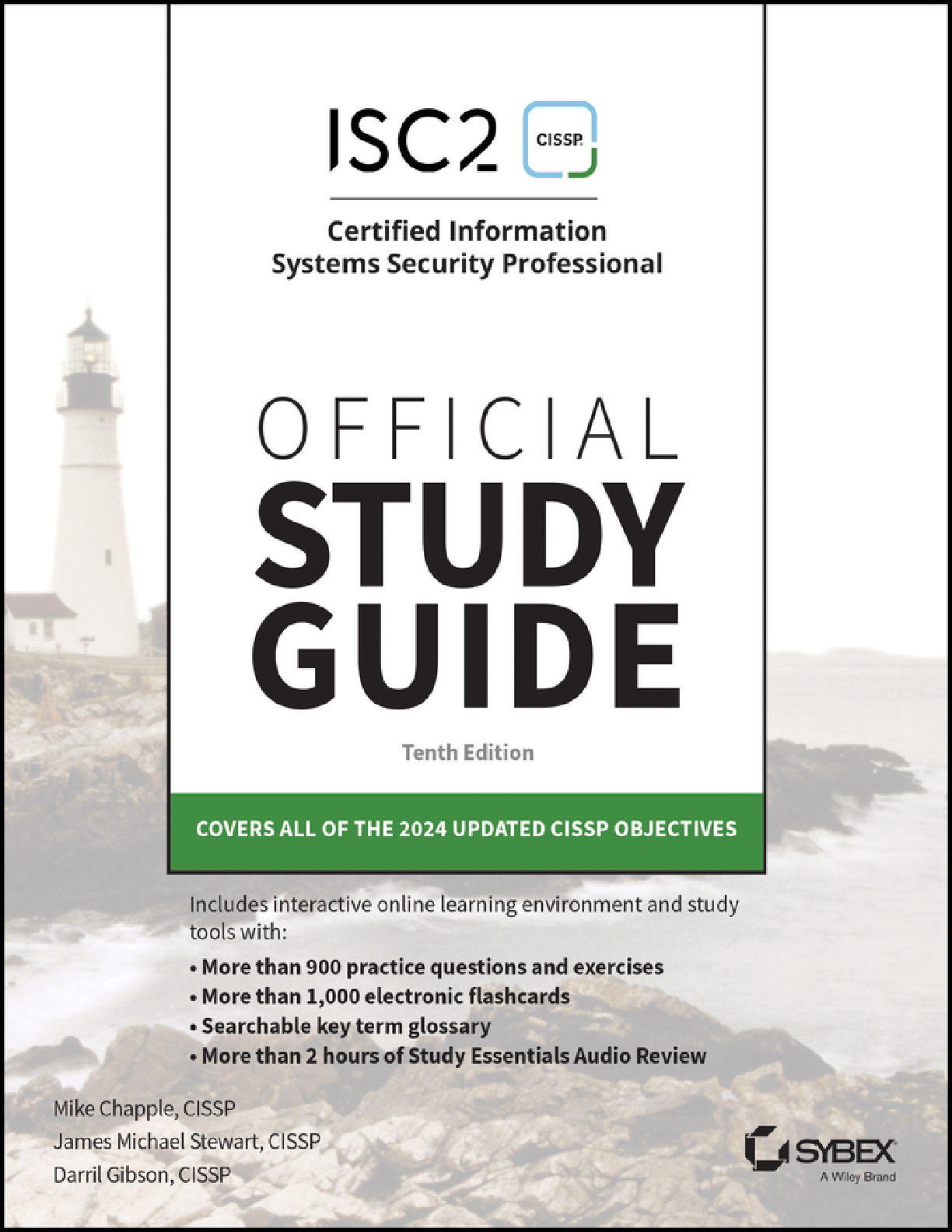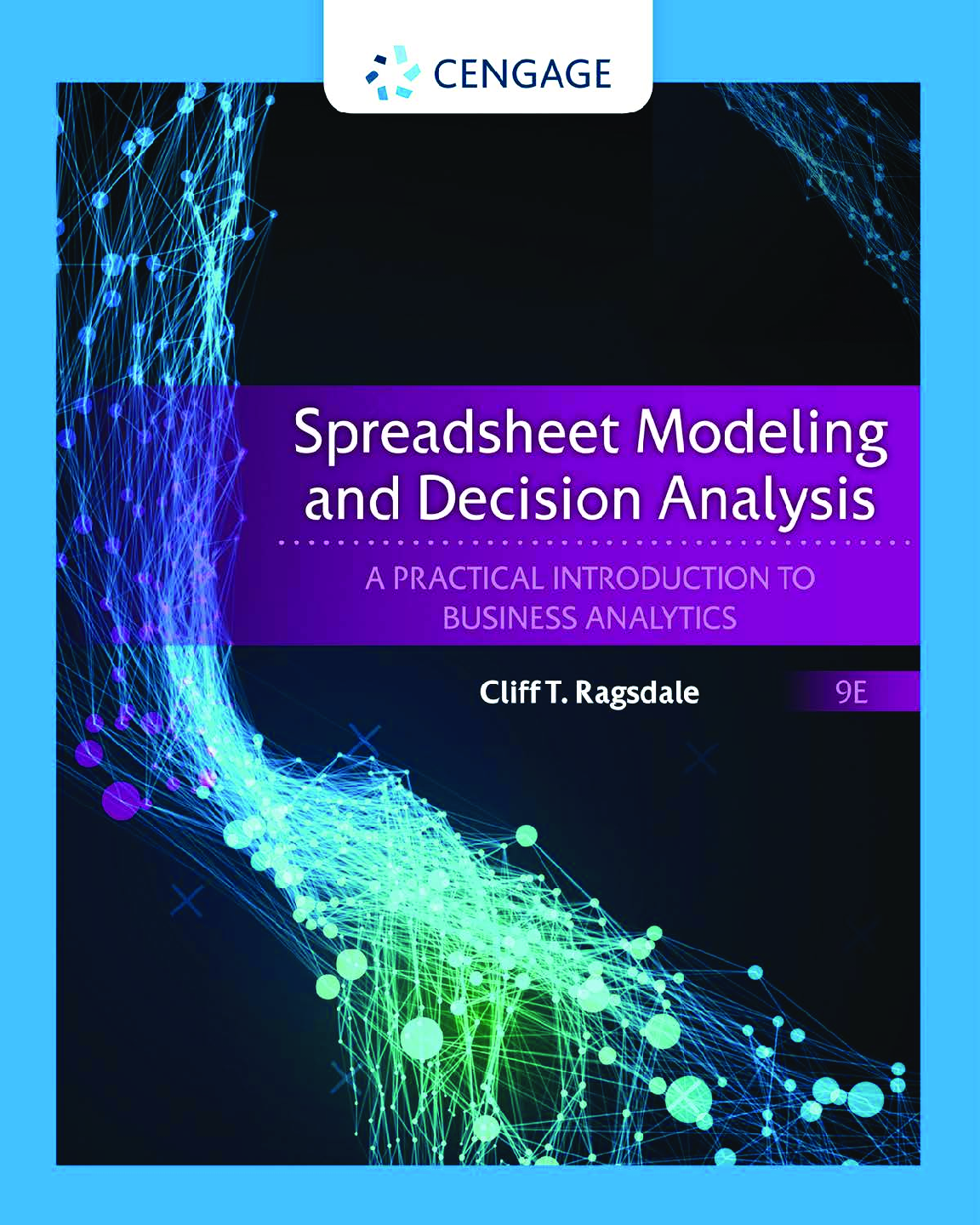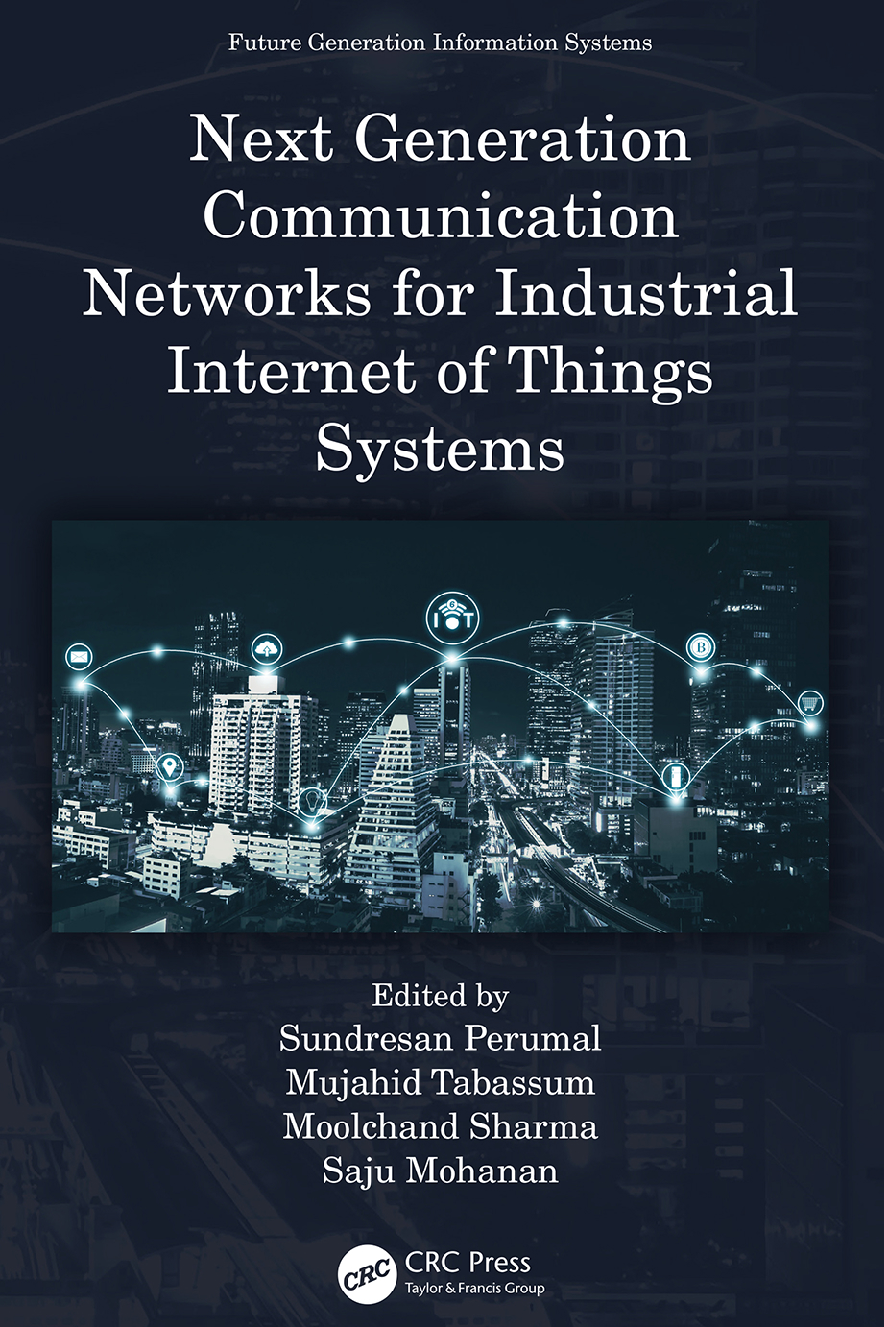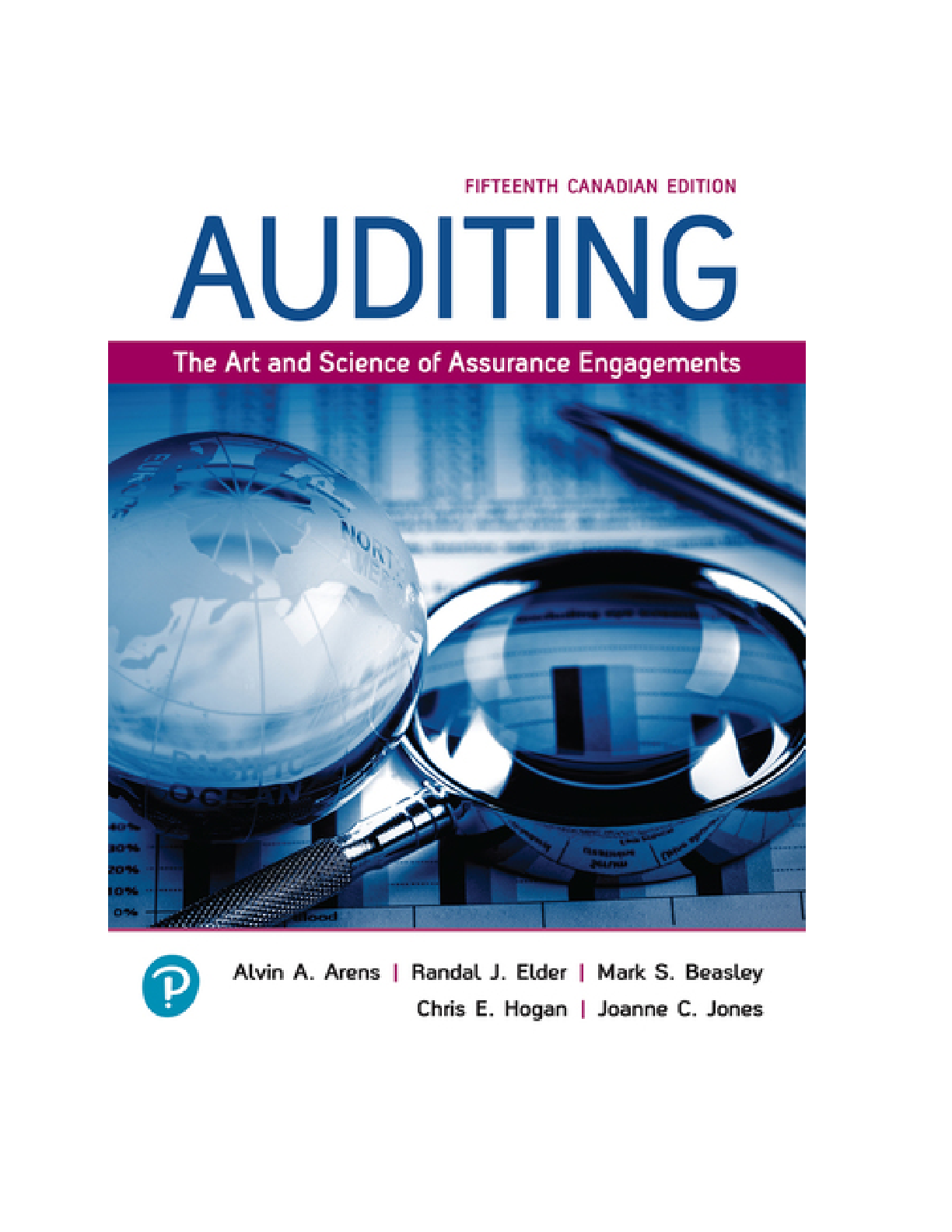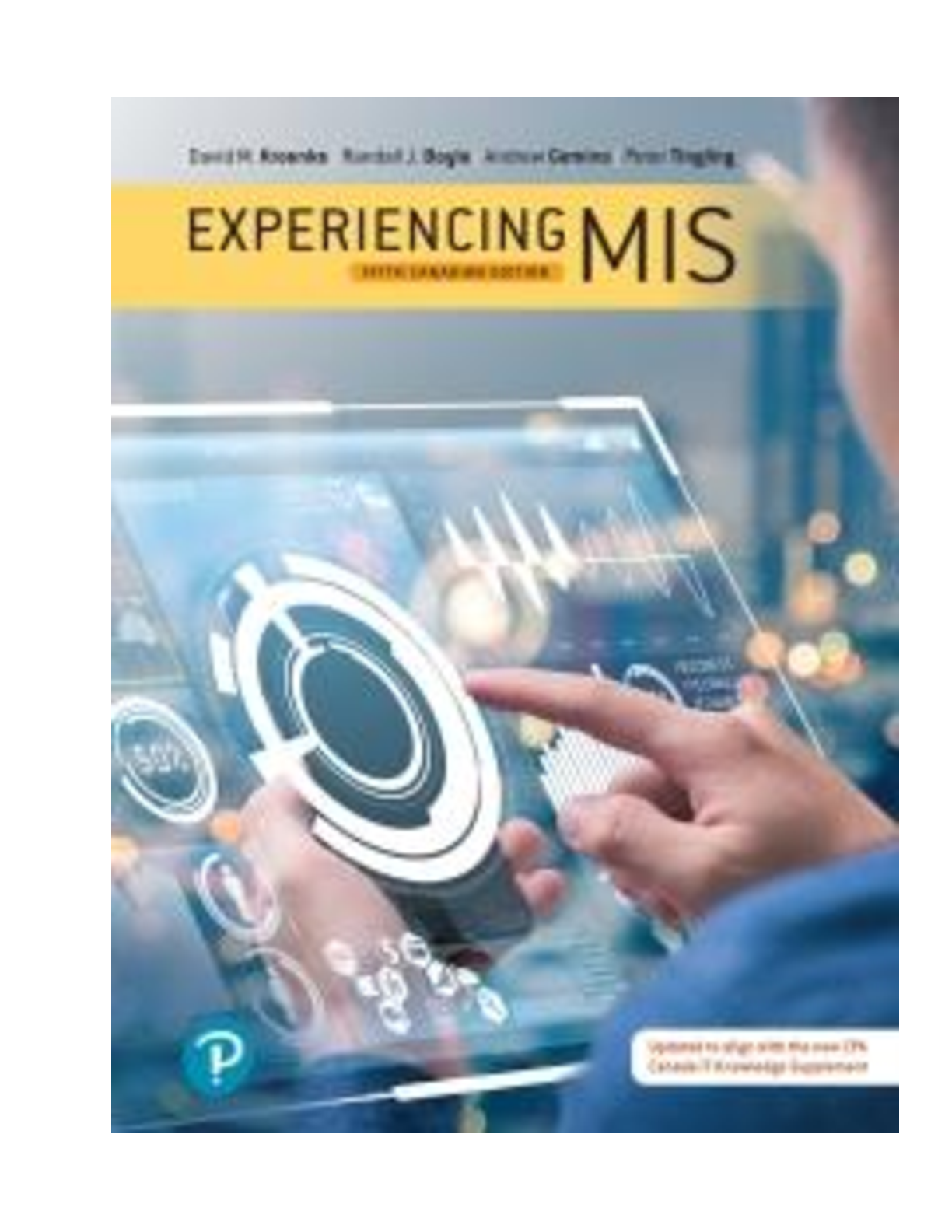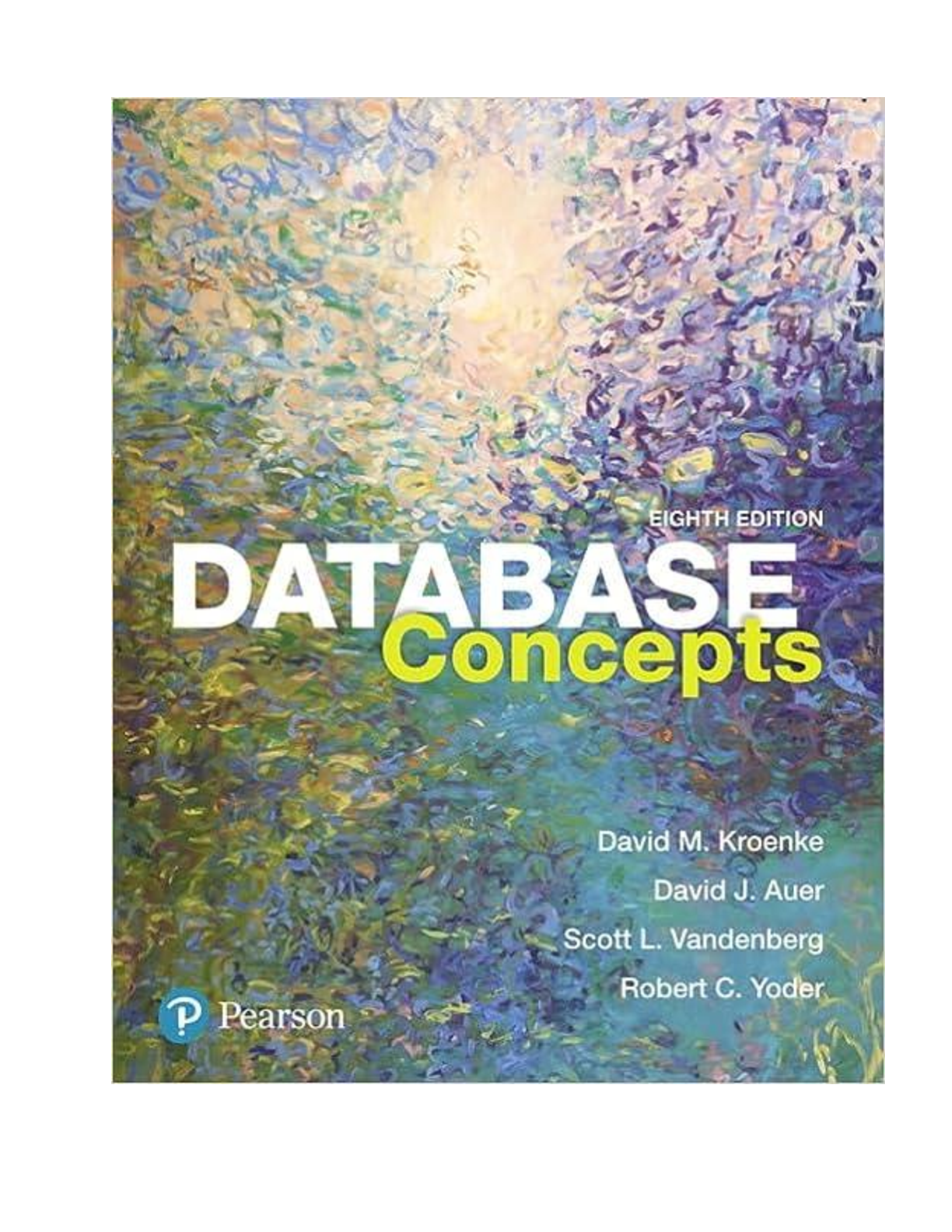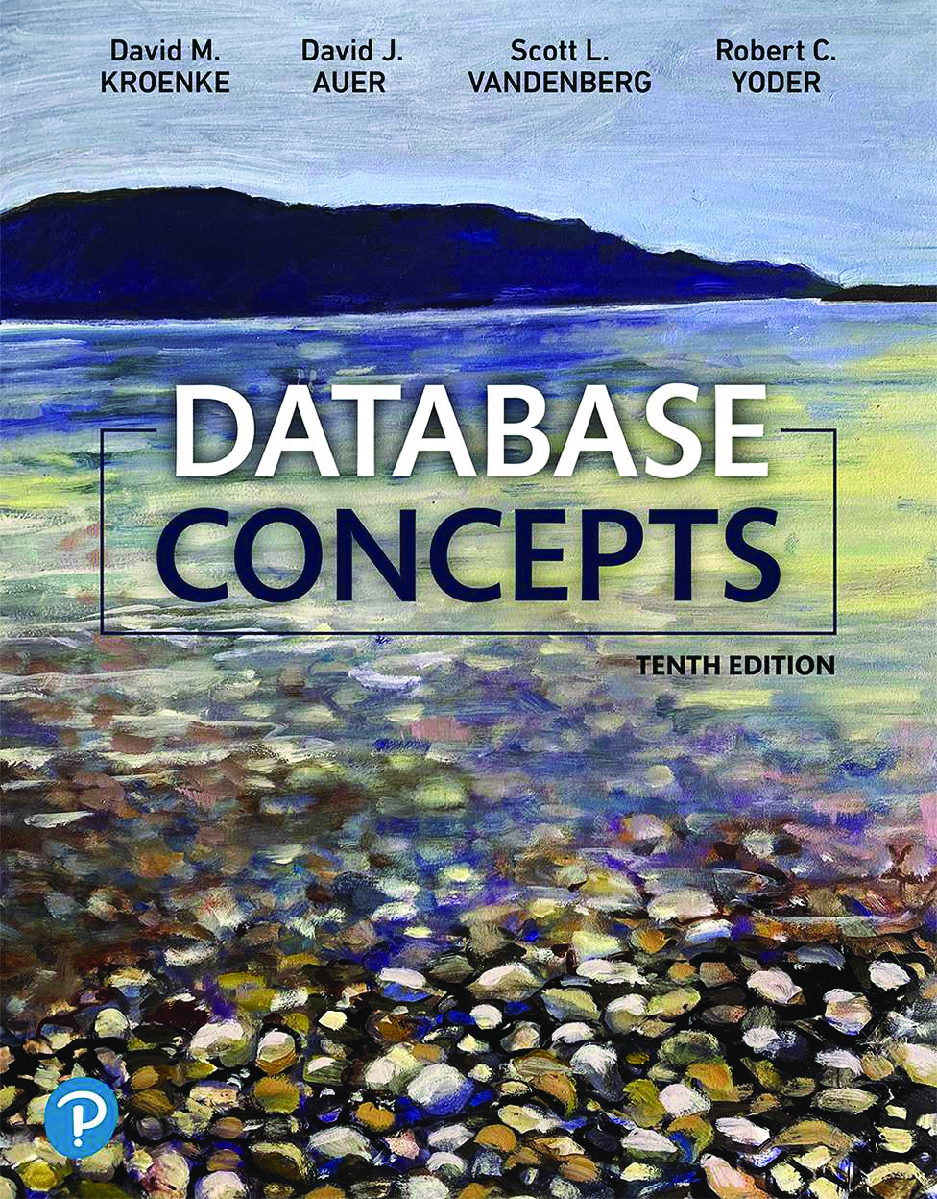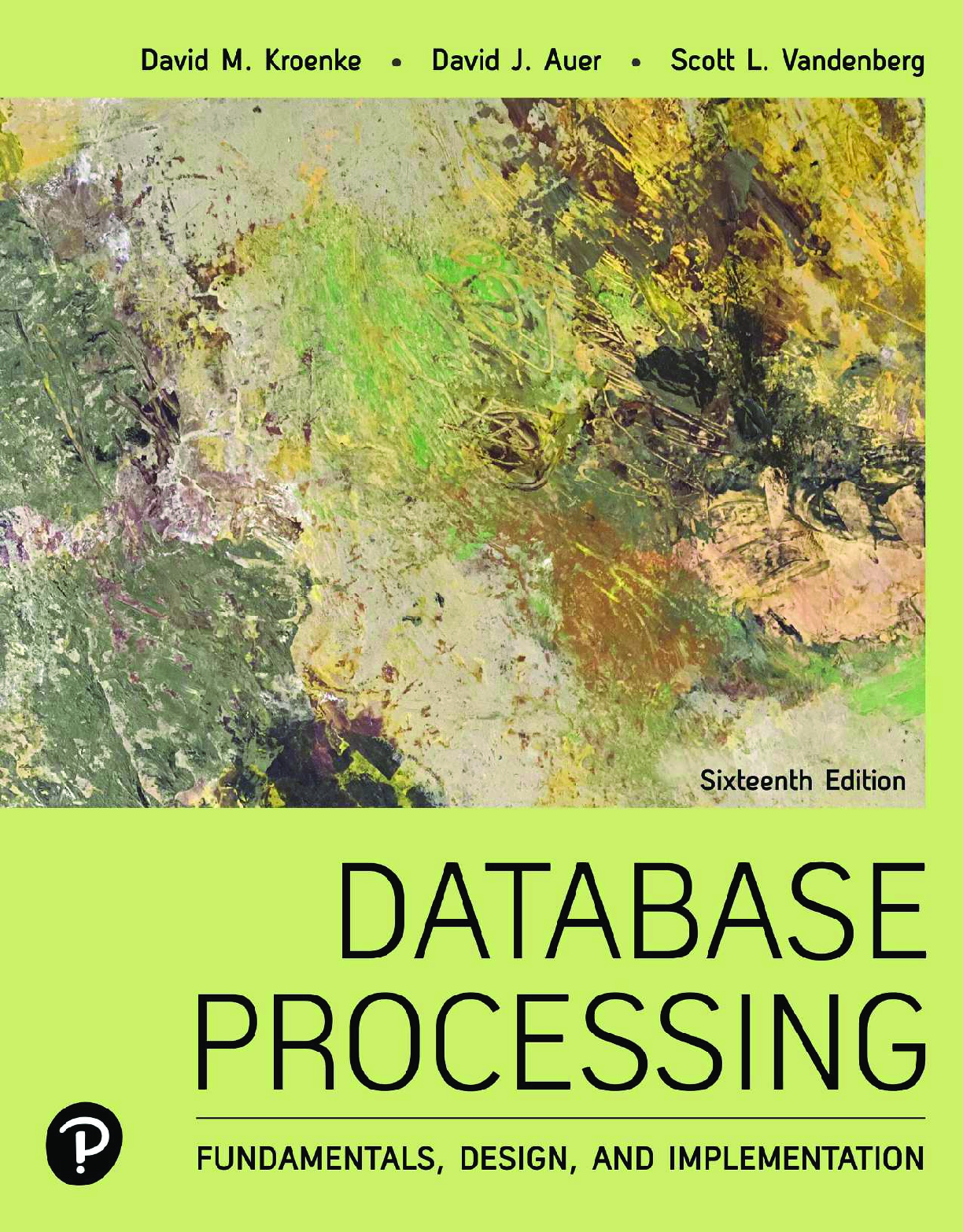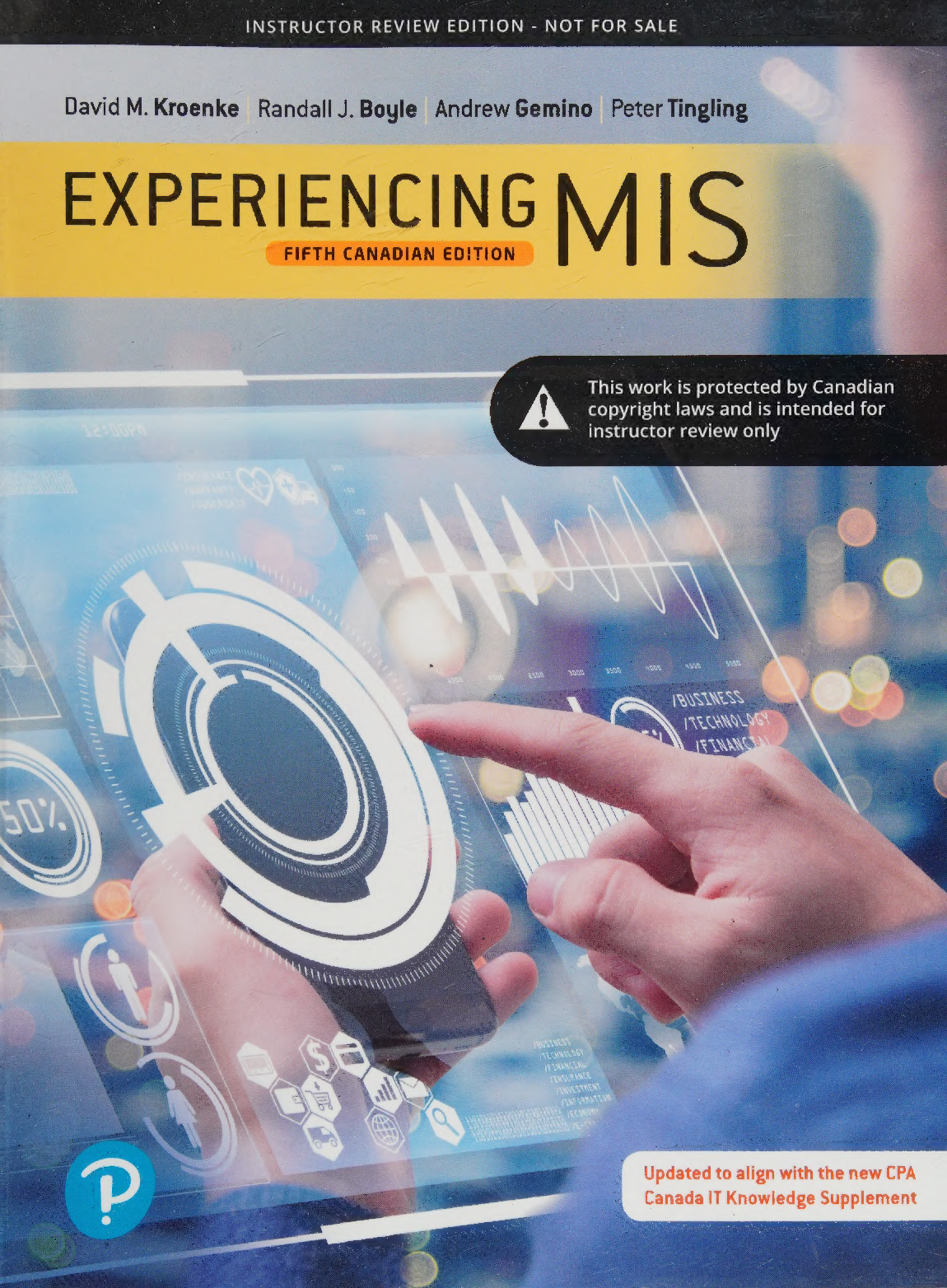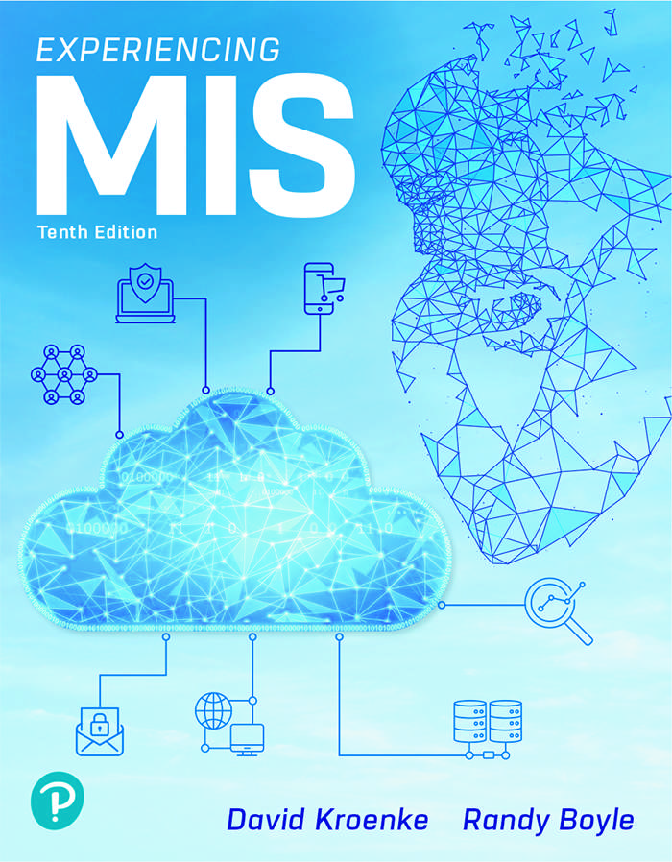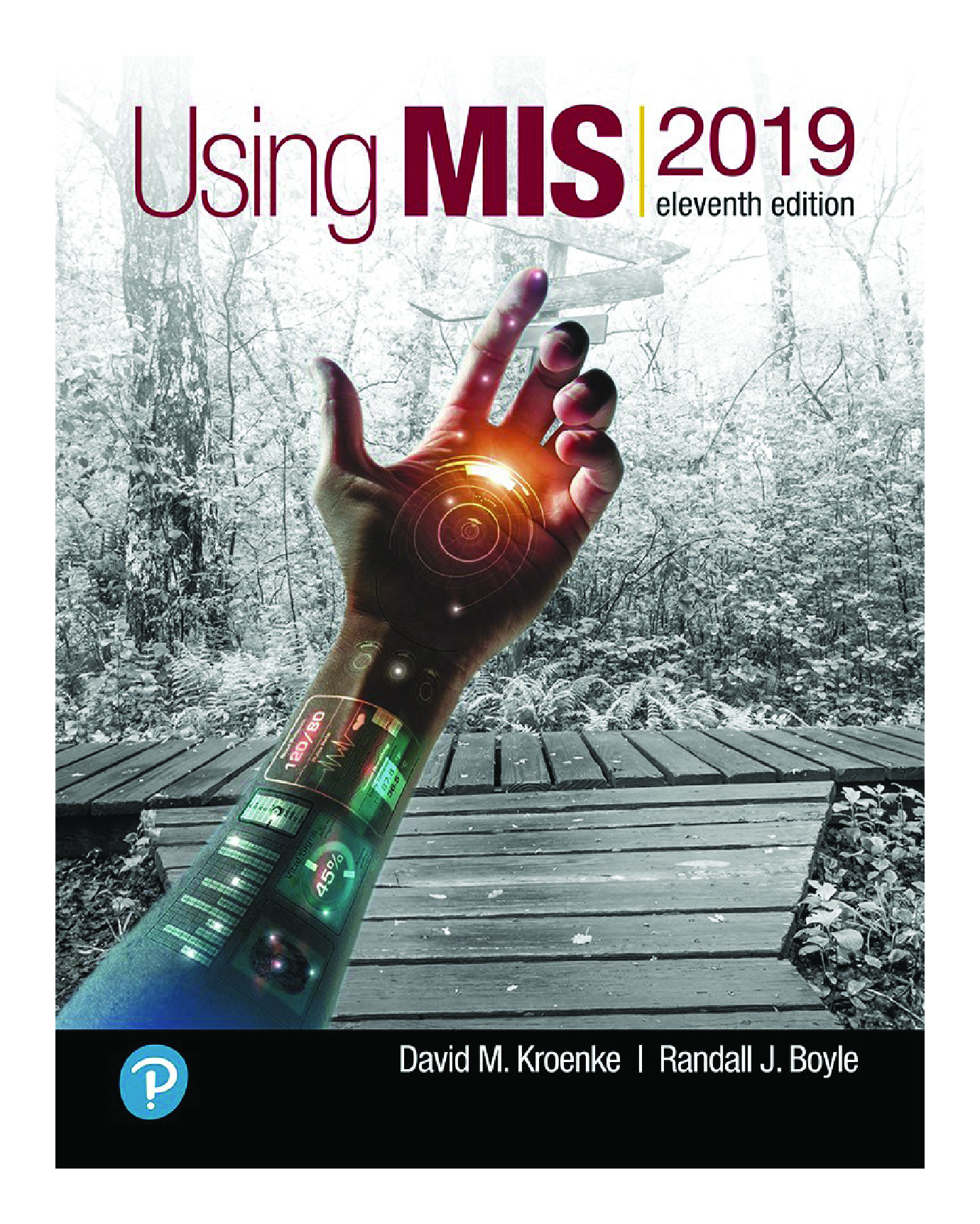Management Information Systems (MIS) > eBook-PDF > Experiencing MIS, 5th Canadian Edition, By David Kroenke, Randall Boyle, Andrew Gemino, Peter Tingli (All)
Experiencing MIS, 5th Canadian Edition, By David Kroenke, Randall Boyle, Andrew Gemino, Peter Tingling [PDF] [eBook]
Document Content and Description Below
[PDF] [eBook] for Experiencing MIS, 5th Canadian Edition, By David Kroenke, Randall Boyle, Andrew Gemino, Peter Tingling Title Page Copyright Page About the Authors Brief Contents Contents Pre... face Acknowledgments Letter to Students Part 1: Why MIS? 1. The Importance of MIS Q1-1. What Is an Information System? Q1-2. What Is MIS? Development and Use of Information Systems Achieving Business Goals and Objectives MIS in Use: Social Media: Changing the Relationship Between Customers and Business Q1-3. How Does an IS Differ from IT? Q1-4. How Important Are Information Systems to Our Economy? Q1-5. How Do Successful Business Professionals Use Information Systems? Q1-6. What Is the Shape of Things to Come? MIS in Use: Google Knows Best Q1-7. What Is This Course About? How Does the Knowledge in This Chapter Help You? Active Review Key Terms and Concepts Using Your Knowledge Collaborative Exercises Case Study 1: Running at the Speed of the Web: The Running Room What Do You Think? Duller Than Dirt? 2. Business Processes and Decision Making Q2-1. “How Did This Stuff Get Here? Q2-2. What Is a Business Process? Q2-3. What Are the Components of a Business Process? Q2-4. What Is Information? Definitions Vary Where Is Information? Characteristics of Good Information Q2-5. What Is the Role of Information in Business Processes? Business Process Management Q2-6. How Do Information Systems Support Business Processes? What Does It Mean to Automate a Process Activity? An Information System to Support Counter Sales An Information System to Support Payment An Information System to Support Purchasing Q2-7. How Do Information Systems Support Decision Making? Decisions Vary by Level Decisions Vary by Structure Supporting Decision Making Q2-8. What Is Your Role? MIS in Use: Helm: Software Making Waves How Does the Knowledge in This Chapter Help You? Active Review Key Terms and Concepts Using Your Knowledge Collaborative Exercises Case Study 2: High Touch, High Tech What Do You Think? Your Personal Competitive Advantage Knowledge Extension 2: Business Process Modelling KE2-1. How Can Business Process Modelling Help Organizations? How Best Bikes Works The Existing Best Bikes Process How Best Bikes Processes Must Change To Support 3D Printing KE2-2. How Can Information Systems Improve Process Quality? What Is Process Quality? Using Information Systems to Improve Process Quality Use an Information System to Store Vendor Data Store Vendor Product and Performance Data in a Database Active Review Key Terms and Concepts 3. Productivity, Innovation, and Strategy Q3-1. Why Should I Care About Productivity and Innovation? Q3-2. What Is Business Technology Management (BTM), and How Is It Related to Productivity and Innova Q3-3. How Do Information Systems Improve Productivity? Business Processes and Value Chains Q3-4. How Are Organizational Strategy and Industry Structure Related? MIS in Use: Winterbourne Bicycle Institute: Building the Biking Experience Q3-5. What Is the Relationship Between Innovation and Information Technology? Q3-6. How Do Information Systems Provide Competitive Advantage? Competitive Advantage via Products and Services Competitive Advantage via Business Processes Q3-7. Can Competitive Advantage Through Information Systems Be Sustained? So What? Your Personal Competitive Advantage How Does the Knowledge in This Chapter Help You? Active Review Key Terms and Concepts Using Your Knowledge Collaborative Exercises Case Study 3: The Amazon of Innovation What Do You Think? The Digital Divide Knowledge Extension 4: Introduction to Microsoft Excel 2016 KE4-1. What Is a Spreadsheet? KE4-2. How Do You Get Started with Excel? KE4-3. How Can You Enter Data? Key in the Data Let Excel Add the Data Using a Pattern KE4-4. How Can You Insert and Delete Rows and Columns and Change Their Size? KE4-5. How Can You Format Data? KE4-6. How Can You Create a (Simple) Formula? KE4-7. How Do I use Vlookup? KE4-8. How Do I use Advanced Functions Such as Solver? KE4-9. What Are Pivot Tables and How Do I use Them? KE4-10. How Can You Print Results? Active Review Key Terms and Concepts Using Your Knowledge Part 2: Using Information Technology 4. Hardware and Software Q4-1. What Do Business Professionals Need to Know About Computer Hardware? Hardware Components Types of Hardware Computer Data Computer Data Sizes Specifying Hardware with Computer Data Sizes and Processing Speeds Q4-2. How Can New Hardware Affect Competitive Strategies? The Internet of Things Impact of the Internet of Things Self-driving Cars Self-driving Cars Will Make Things Easier Self-driving Cars Will Make Things Cheaper Self-driving Cars Will Make Things Safer Self-driving Cars Will Disrupt Businesses 3D Printing Q4-3. What Do Business Professionals Need to Know About Software? What Are the Major Operating Systems? Nonmobile Client Operating Systems Mobile Client Operating Systems Server Operating Systems Virtualization Owning Versus Licensing What Types of Applications Exist, and How Do Organizations Obtain Them? Horizontal Applications Vertical Applications One-of-a-Kind Applications Selecting an Application Type What Is Firmware? Q4-4. Is Open Source Software a Viable Alternative? Why Do Programmers Volunteer Their Services? How Does Open Source Work? So, Is Open Source Viable? How Does the Knowledge in This Chapter Help You? Active Review Key Terms and Concepts Using Your Knowledge Collaboration Exercises Case Study 4: Network Effects, Increasing Returns, and Lock-In What Do You Think? Keeping Up to Speed 5. Database and Content Management Q5-1. Why Do You Need to Know About Databases and What Is Their Purpose? Reasons for Learning Database Technology What Is the Purpose of a Database? Q5-2. What Is Content and How Is It Organized? Opentext: From Spinoff to Market Leader Q5-3. What Does a Database Contain? Relationships Among Records Metadata Q5-4. What Is a DBMS, and What Does It Do? The Database Management System Creating the Database and Its Structures Processing the Database Administering the Database Q5-5. What Is a Database Application? MIS in Use: The Many Names of One Customer Forms, Reports, and Queries Database Application Programs Multiuser Processing Q5-6. What Is the Difference Between Databases and Where Are We Headed? Need to Store New Data Types Differently Need for Faster Processing Using Many Servers Nontraditional DBMS Types Will These New Products Replace the Relational Model? What Do Nonrelational DBMS Mean for You? How Does the Knowledge in This Chapter Help You? Active Review Key Terms and Concepts Using Your Knowledge Case Study 5: Searching for Pianos … What Do You Think? Nobody Said I Shouldn’t Knowledge Extension 6: Database Design KE6-1. Who Will Volunteer? KE6-2. How Are Database Application Systems Developed? KE6-3. What Are the Components of the Entity-Relationship Data Model? Entities Relationships KE6-4. How Is a Data Model Transformed into a Database Design? Normalization Representing Relationships KE6-5. What Is the Users’ Role? KE6-6. Who Will Volunteer? (Continued) Active Review Key Terms and Concepts Using Your Knowledge Knowledge Extension 7: Using Microsoft Access 2016 KE7-1. How Do You Create Tables? Starting Access Creating Tables KE7-2. How Do You Create Relationships? KE7-3. How Do You Create a Data Entry Form? KE7-4. How Do You Create Queries Using the Query Design Tool? KE7-5. How Do You Create a Report? Active Review Using Your Knowledge 6. The Cloud Q6-1. Why Should I Care About Networks? Networks and Collaboration Network Externalities What Is the Global Positioning System (GPS)? Q6-2. What Is a Computer Network? Q6-3. Why is the Cloud the Future for Most Organizations? What Is the Cloud? Why Is the Cloud Preferred to In-House Hosting? Why Now? When Does the Cloud Not Make Sense? Q6-4. How Do Organizations Use the Cloud? Cloud Services from Cloud Vendors Content Delivery Networks Use Web Services Internally Q6-5. How Can Organizations Use Cloud Services Securely? Virtual Private Network (VPN) Using a Private Cloud Using a Virtual Private Cloud So What? Net Neutrality Enabled Q6-6. What Does the Cloud Mean for Your Future? Q6-7. How Is Mobile Computing Changing the Way We Work and Live? A Word of Caution MIS in Use: Never Miss Your Bus How Does the Knowledge in This Chapter Help You? Active Review Key Terms and Concepts Using Your Knowledge Collaborative Exercises What Do You Think? Human Networks Matter More Knowledge Extension 9: Network and Cloud Technology KE9-1. What Is a Computer Network? KE9-2. What Are the Components of a LAN? Connecting your LAN to the Internet KE9-3. How Does the Internet Work? An Internet Example Carriers and Net Neutrality Internet Addressing Processing on a Web Server KE9-4. How Does the Cloud Work? Service-Oriented Architecture (SOA) Protocols Supporting Web Services Active Review Key Terms and Concepts Using Your Knowledge Part 3: Using IS for Competitive Advantage 7. Organizations and Information Systems Q7-1. What Are the Fundamental Ways of Achieving Competitive Advantage? Q7-2. What Are Business Functions and Functional Systems? Functional Silos and Cross-Functional Systems Why Are Functional Systems Changing? Q7-3. How Can Business Processes Be Improved? Integrating Functional Systems: EAI and ERP Q7-4. What Are the Challenges of Implementing Business Process Changes? Q7-5. What Is the Importance of Industry Standard Processes? Q7-6. What Are ERP Systems? ERP Characteristics Benefits of ERP Q7-7. What Are CRM Systems? Q7-8. What Are SCM Systems? Supplier Relationship Management MIS in Use: Yes We Can: Lessons Learned in ERP Implementation at DPT How Does the Knowledge in This Chapter Help You? Active Review Key Terms and Concepts Using Your Knowledge Collaborative Exercises Case Study 7: Moving Like a Deere: Deere’s Innovative Revolution What Do You Think? Available Only in Vanilla? 8. Decision Making and Business Intelligence Q8-1. Do Managers Make Rational Decisions? Information Overload Data Quality Q8-2. What Are OLTP and OLAP and How Do They Support Decision Making? Q8-3. What Are Business Intelligence Systems? MIS in Use: Sports Decisions Go High Tech Q8-4. How Do Organizations Use Data Warehouses to Acquire Data? Q8-5. What Are the Differences Between Data Warehouses and Data Marts? Q8-6. What Are Typical Data Mining Applications? Unsupervised Data Mining Supervised Data Mining The Market-Basket Example Big Data How Does the Knowledge in This Chapter Help You? Active Review Key Terms and Concepts Using Your Knowledge Collaborative Exercises Case Study 8: Building Data for Decision Making at Home Depot What Do You Think? Unseen Cyberazzi 9. Social Networking, Ecommerce, and the Web Q9-1. What Is a Social Media Information System (SMIS)? Three SMIS Roles SMIS Components Q9-2. How Do SMIS Advance Organizational Strategy? Social Media and the Sales and Marketing Activity Social Media and Customer Service Social Media and Inbound and Outbound Logistics Social Media and Manufacturing and Operations Social Media and Human Resources So What? Facebook for Organizations Q9-3. How Do SMIS Increase Social Capital? What Is the Value of Social Capital? How Do Social Networks Add Value to Businesses? Q9-4. How Do (Some) Companies Earn Revenue From Social Media? You Are the Product Revenue Models for Social Media Does Mobility Reduce Online Ad Revenue? Q9-5. How Can Organizations Address SMIS Security Concerns? Managing the Risk of Employee Communication Managing the Risk of Inappropriate Content Internal Risks from Social Media Q9-6. Where Is Social Media Taking Us? Q9-7. What Is Ecommerce, and How Is It Used? Ecommerce Merchant Companies Nonmerchant Ecommerce Benefits of Ecommerce The Challenges of Ecommerce So What? Synthetic Friends MIS in Use: Digital Is Forever How Does the Knowledge in This Chapter Help You? Active Review Key Terms and Concepts Using Your Knowledge Collaboration Exercises Case Study 9: Let Me Get That: Buyatab and Where Good Ideas Come From What Do You Think? Hiding the Truth? Part 4: Information Systems Management 10. Acquiring Information Systems Through Projects Q10-1. How Can Information Systems Be Acquired? Q10-2. What Are IT Projects, and What Does PMBOK Mean? Q10-3. What Should You Know About IT Operations and IT Projects? What About the Web? Q10-4. Why Are IT Projects So Risky? Q10-5. What Is a SDLC? Phase 1: Defining Systems Phase 2: Requirements Analysis Q10-6. How Are Information Systems Designed, Implemented, and Maintained? Phase 3: Component Design Phase 4: Implementation Phase 5: Maintenance Q10-7. What Is Outsourcing, and What Are Application Service Providers? Application Service Providers MIS in Use: From Lemons to Lemonade How Does the Knowledge in This Chapter Help You? Active Review Key Terms and Concepts Using Your Knowledge Collaborative Exercises Case Study 10: Email or Freemail? What Do You Think? The Real Estimation Process Knowledge Extension 16: Introduction to Microsoft Project KE16-1. What Is Project Management Software? KE16-2. How Do I Create and Manage Tasks? Creating Subtasks Creating Dependencies KE16-3. How Do I Manage Resources? Adding Resources to Tasks Active Review Key Terms and Concepts Using Your Knowledge 11. Structure, Governance, and Ethics Q11-1. How Is the IT Department Organized? What About the Web? Q11-2. What Jobs Exist in IT Services? So What? Jumping Aboard the Bulldozer Q11-3. What Is IT Architecture? Q11-4. What Is Alignment, Why Is It Important, and Why Is It Difficult? Q11-5. What Is Information Systems Governance? The Sarbanes-Oxley Act (SOX) and the Budget Measures Act (Bill 198) Summary Q11-6. What Is an Information Systems Audit, and Why Should You Care About It? Why Should You Care About Information Systems Governance and Information Systems Audits? Q11-7. What Is Information Systems Ethics? MIS in Use: Sarbanes-Oxley: Boon or Bane? Q11-8. What Is Green IT, and Why Should You Care About It? How Does the knowledge in This chapter help you? Active Review Key Terms and Concepts Using Your Knowledge Collaborative Exercises Case Study 11: Governance at Pacific Blue Cross What Do You Think? The Ethics of Misdirected Information 12. Managing Information Security and Privacy Q12-1. What Is Identity Theft? Q12-2. What Is PIPEDA? So What? Protecting Yourself from Identity Theft Q12-3. What Types of Security Threats Do Organizations Face? Unauthorized Data Disclosure Incorrect Data Modification Faulty Service Denial of Service Loss of Infrastructure Elements of a Security Program Q12-4. How Can Technical Safeguards Protect Against Security Threats? Identification and Authentication Single Sign-On for Multiple Systems Encryption and Firewalls Malware Protection Malware Safeguards Q12-5. How Can Data Safeguards Protect Against Security Threats? Q12-6. How Can Human Safeguards Protect Against Security Threats? Human Safeguards for Employees MIS in Use: What Is My True Name? Human Safeguards for Non-employees Account Administration How Can You Create a Strong Password? Security Monitoring MIS in Use: Privacy and the Federal Government Q12-7. What Is Disaster Preparedness? Q12-8. How Should Organizations Respond to Security Incidents? How Does the Knowledge in This Chapter Help You? Active Review Key Terms and Concepts Using Your Knowledge Collaborative Exercises Case Study 12: Phishing for Credit Card Accounts What Do You Think? The Final, Final Word Glossary Index [Show More]
Last updated: 2 years ago
Preview 1 out of 600 pages

Buy this document to get the full access instantly
Instant Download Access after purchase
Buy NowInstant download
We Accept:

Reviews( 0 )
$25.00
Can't find what you want? Try our AI powered Search
Document information
Connected school, study & course
About the document
Uploaded On
Dec 19, 2022
Number of pages
600
Written in
Additional information
This document has been written for:
Uploaded
Dec 19, 2022
Downloads
0
Views
104

